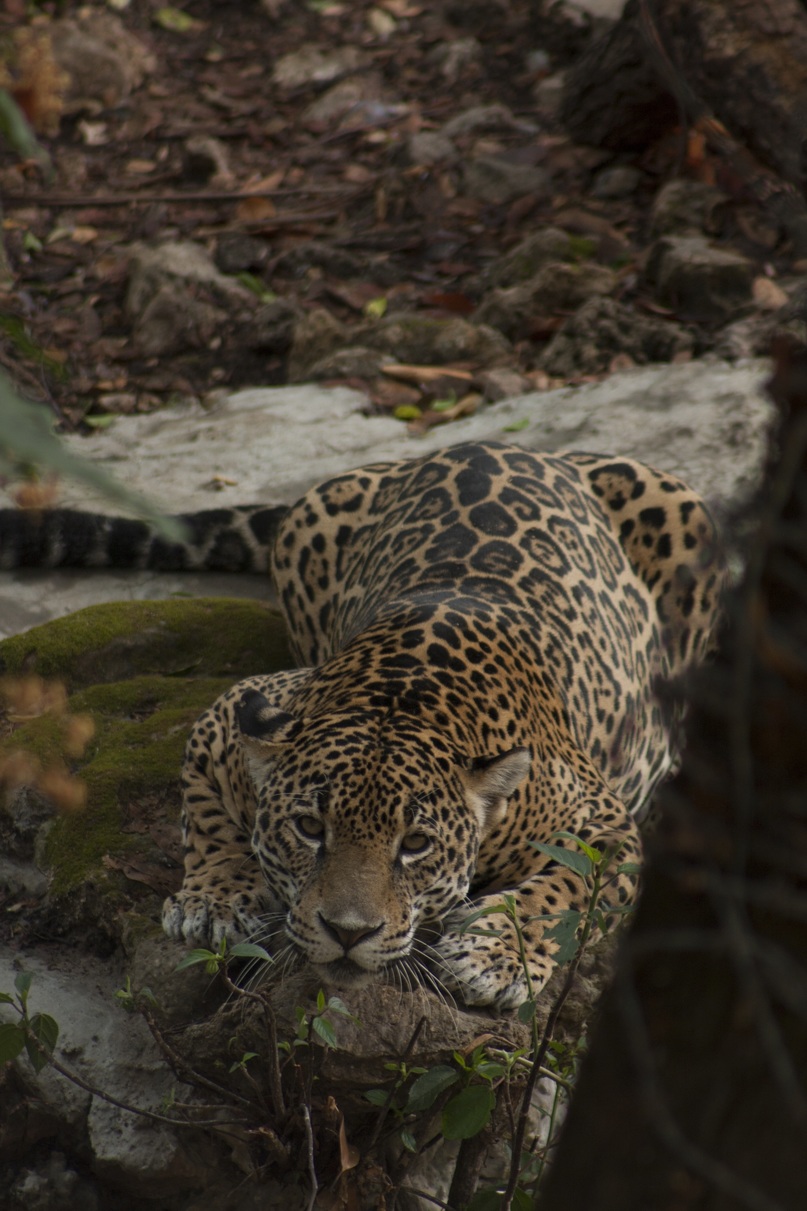Biodiversity and transboundary conservation

A jaguar crouches in the Lancandon rainforest, Mexico. ITTO works with members to develop policies and projects to conserve and sustainably use biodiversity and provide livelihoods for forest-dependent people. Photo: M. Alcalde & I. Huerta/CONAFOR
Tropical forests cover only a small fraction of the Earth but are estimated to harbour more than half its terrestrial plant and animal species. This biodiversity performs many useful functions, including helping maintain forest health and productivity. Logging in tropical forests is often cited as a major threat to biodiversity, but there is considerable evidence to suggest that well-managed forests used for timber production can constitute a major resource for biodiversity conservation. Indeed, it is crucial that they do.
Since its inception, ITTO has worked with members to develop policies and implement projects aimed at conserving this rich biodiversity while also creating economic opportunities for forest-dependent people.In the early 1990s, the Organization worked with the International Union for Conservation of Nature (IUCN) to develop the ITTO Guidelines for the Conservation of Biological Diversity in Tropical Production Forests. This policy document was updated and published in 2009 as the ITTO/IUCN Guidelines for the Conservation and Sustainable Use of Biodiversity in Tropical Timber Production Forests.
The guidelines set out the reasons for making biodiversity conservation a goal of national forest policy and show ways of establishing permanent forest estates that integrate conservation areas with natural and planted production forests. They provide advice on planning at the landscape level, such as linking reserves with corridors of natural forest to allow wildlife to move between reserves. At the field level, the guidelines present principles and actions to maximize biodiversity conservation during management activities.
ITTO takes a dual approach to biodiversity conservation. First, it aims to reduce the loss of biodiversity associated with the extraction of forest products and services, particularly timber, through improved forest management. Second, it assists member countries to manage protected areas. In particular, ITTO has supported efforts to improve the management of more than 10 million hectares of transboundary conservation areas, in which two or more countries cooperate in the management, conservation and sustainable use of ecologically important areas straddling borders.
Related links
-
Tough climb up for biodiversity
(TFU issue published 2021)
- See the news story, ITTO and biodiversity convention renew collaboration to 2025
-
Download Asia Pacific Regional Workshop on Trans-Boundary Biodiversity Conservation: Empowering Forestry Communities and Women in Sustainable Livelihood Development
(published 2018)
-
Download Pulong Tau Buffer Zone: Ecosystem, Biodiversity and People
(published 2018)
-
Download The Bright Green Hotspot: Outcomes of the Emerald Triangle Protected Forest Complex Project 2000–2016
(published 2017)
-
Download Transboundary Conservation and Peace-building: Lessons from Forest Biodiversity Conservation Projects
(published 2011)
-
Download ITTO/IUCN Guidelines for the Conservation and Sustainable Use of Biodiversity in Tropical Timber Production Forests
(published 2009)
- Watch the video Message from the Convention of Biological Diversity at the launch of The Bright Green Hotspot
- Watch the video ¿Qué es la conectividad? (“What is connectivity?”—Spanish only)
- Watch the video Restauración en el Volcán Tacaná (“Restoration in the Tacana volcano area”— Spanish only)
- Watch the video Cascadas para una mejor calidad de vida (“Waterfalls and improved livelihoods”—Spanish only)
-
See biodiversity and transboundary conservation projects
Search by keywords: biodiversity, transboundary, protected area.